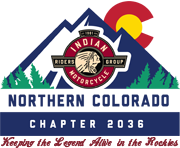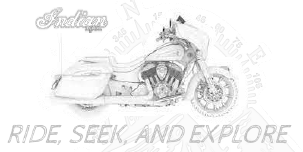
NORTHERN COLORADO IMRG UPCOMING EVENTS
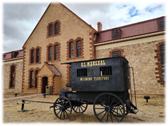
Saturday 9/16 Post Chapter Meeting Ride to Wyoming Territorial Prison. After our Chapter meeting (starts 9:30 a.m. at the Indian Motorcycle of Fort Collins), we will do a group ride to the Wyoming Territorial Prison Historic Site and explore this 1872 penitentiary. This imposing stone structure incarcerated over 1,200 prisoners, including the notorious Butch Cassidy, during the dramatic times of Wyoming’s territorial days and early statehood. The prison is located Laramie, WY. The admission fee is $9.00 per person.

Wednesday 9/21 Evening Dinner Ride. For this evening’s Dinner Ride, we will head to Greeley for dinner at Santeramo’s Pizza House & Italian Food where they offer traditional, home style eatery cooking from the same Italian recipes since 1962. Meetup at the Dealership @6:00pm with KSU @6:15pm.
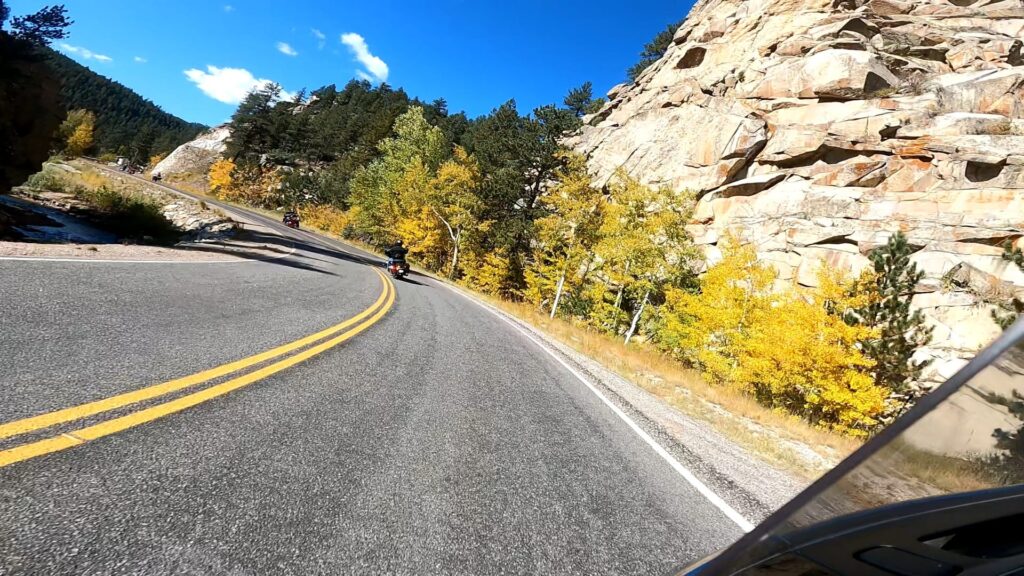
Sunday 10/8 Peak-to-Peak & Idaho Springs Ride. We will ride this National Scenic Byway offering a variety of terrain and scenery. This ride provides stunning views of the peaks and valleys in the Rocky Mountains. More details on this ride to come.
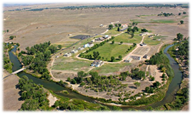
Saturday 10/14 Fort Laramie Ride. Originally established as a private fur trading fort in 1834, Fort Laramie evolved into the largest and best known military post on the Northern Plains before its abandonment in 1890. It was a popular stopping-point for migrants on the Oregon Trail. The nearest city is Torrington, WY. More details on this ride to come.
For up-to-date information on all Northern Colorado IMRG rides and events, visit our Events Calendar.
SAFETY TIP: READING VEHICLE LANGUAGE
A Safety Tip from Paul Carroll
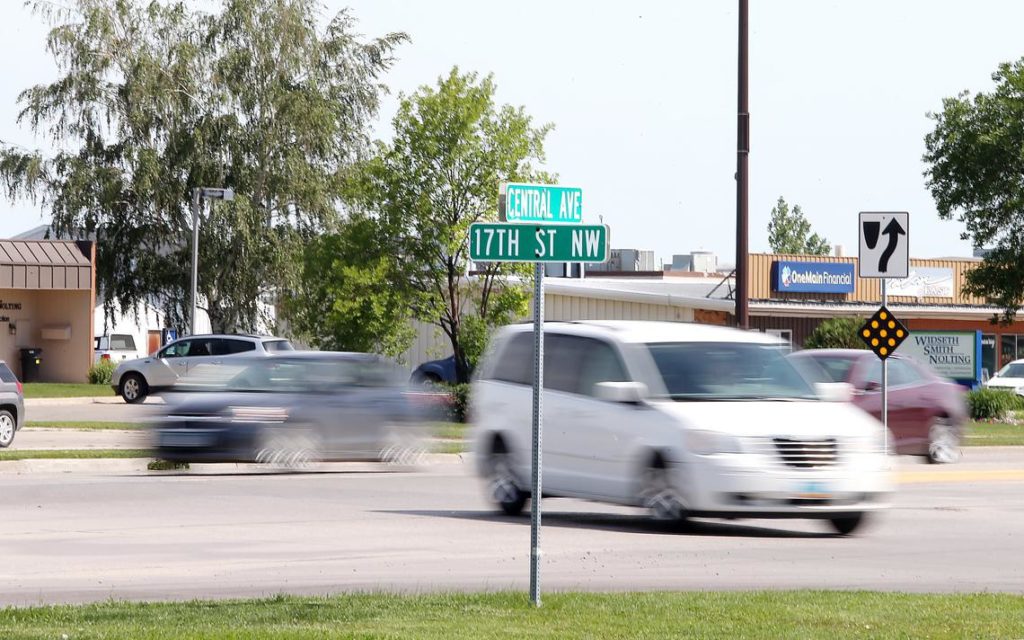
Motorcycling in general is a risky activity. As riders, we need to stay focused on those risk mitigation strategies that will help keep us safe. Over the years, I have talked about several things riders can do to minimize risk, but one thing that is overlooked is being able to “Read Vehicle Language.”
What I mean here is simply being able to predict what a motorist may do based on the vehicle’s current position or movement. For example, let’s say a car is sitting in the left turn lane at an intersection, but it’s slowly creeping out across the stop line at an angle. This would indicate the driver is determined to make a left turn on the current green light and is probably a more aggressive driver. As you approach, you should be preparing for an emergency stop: rolling off the throttle slightly, right fingers covering the front brake lever and positioned in the lane where the motorcycle would be the most visible to the oncoming traffic at the intersection.
Another example would be you riding down a county road. As you approach an intersection from a distance, you notice you have the right of way with no stop signs. You see a vehicle approaching perpendicular from the right and they do have a stop sign. You notice the vehicle speed does not seem to change, nor do you see the vehicle’s front end dipping indicating sudden braking. This could be an indicator this motorist is not going to stop.
A final example is a motorist stopped at a light or stop sign perpendicular to your direction of travel. Try to focus on the wheels and not the vehicle. It takes much longer for your brain to pick up on the vehicle’s mass to determine if it is starting to move versus seeing the wheels starting to turn.
While there are many more examples I could use, the point here is to stay actively engaged in your ride. Notice what is going on around you all of the time. Reading the surrounding vehicles language and being prepared to act early, could keep you from having to take emergency actions later.
Until next time, Ride Safe!
INDIAN MOTORCYCLE YOUTUBE CHANNEL

The Indian Motorcycle YouTube channel (YouTube.com/@Indian_Motorcycle) is the official channel of Indian Motorcycle. The channel has over 92K subscribers and hundreds of videos. The videos on the channel showcase Indian Motorcycle’s motorcycles, racing team, and culture. The Indian Motorcycle YouTube channel is a great resource for anyone interested in learning more about the brand or its motorcycles. Whether you’re a die-hard fan or just getting started, there’s something for everyone on the channel.
The videos are informative and entertaining, and they give viewers a behind-the-scenes look at the world of Indian Motorcycles. The channel was created in 2009 and features a variety of content, including product overviews, motorcycle reviews, racing videos, and behind-the-scenes footage.
The channel also features a number of series, including:
- “The Indian Motorcycle Experience” – This series showcases the different ways people enjoy Indian Motorcycles.
- “Forged” – This series follows Indian Motorcycle’s custom bike builders as they create one-of-a-kind machines.
- “Inside Indian Motorcycle Racing” – This series gives viewers a behind-the-scenes look at Indian Motorcycle’s racing program.
The videos are well-produced and informative, and they provide a glimpse into the world of Indian Motorcycle.
BURT MUNRO INDUCTED INTO STURGIS MOTORCYCLE MUSEUM HALL OF FAME
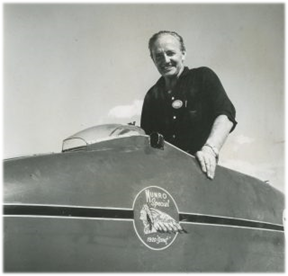
Burt Munro, the legendary New Zealander who set land speed records on his modified Indian Scout motorcycle, was inducted into the Sturgis Motorcycle Museum Hall of Fame in its class of 2023 inductees.
Munro was born in Invercargill, New Zealand in 1899. He began racing motorcycles in the 1920s, and in 1962, he traveled to the Bonneville Salt Flats in Utah to compete in the annual Speed Trials. He set a new record for the under-1000cc class, and he returned to Bonneville in 1966 and 1967 to set even faster records.
Munro’s story was made into the 2005 film “The World’s Fastest Indian,” starring Anthony Hopkins. The film brought Munro’s story to a wider audience, and he is now considered one of the most iconic figures in motorcycle history.
“Burt Munro is an inspiration to us all,” said Aaron Jax, Vice President of Indian Motorcycle. “He was a tireless tinkerer and a dreamer, and he never gave up on his dream of setting a land speed record. We are honored to have him inducted into the Sturgis Motorcycle Museum Hall of Fame.
Munro joins the museum’s Hall of Fame class of 2023, which also includes the 1981 Des Nations Team USA, Chris Callen, Jay Allen, Roland Sands, Russell Radke, and Scott Jacobs.
The Sturgis Motorcycle Museum Hall of Fame is located in Sturgis, South Dakota and is open year-round. In addition to the Hall of Fame, the museum also features a collection of motorcycles, memorabilia, and exhibits that tell the story of motorcycling. It is a must-see for any motorcycle enthusiast.
Why did the motorcycle stay at home?

It was two tired!!
FRICTION ZONE
At our last skills practice session, we practiced riding as slow as you can in a straight line without putting your feet down. This was to get you to gain a better feel of the friction zone on your motorcycle. Using the friction zone is a core skill every rider needs to master. Using the friction zone is the foundation for all slow speed maneuvering on a motorcycle such as u-turns, stop and go traffic and controlling the motorcycle in tight confined areas. Here is one exercise from MCrider to practice gaining control of the friction zone.
Exercise Layout:

Directions:
Begin at the start position and ride as slowly as you can to the end position without putting your feet down. Keep the motorcycle in a relatively straight path and continue working on going as slow as you can.
Coaching Tips:
- Maintain good riding posture with elbows in and relaxed, knees squeezing the tank, and head and eyes up looking toward the horizon
- Stay in the friction zone
- Keep steady pressure to the rear brake while riding slowly
- Do not use the front brake
- Use only a little steady throttle
- After 5 minutes of practice, ride the motorcycle around the parking for a few minutes with no clutch or brakes to give them a chance to cool down
Problem Correction:
- If having trouble with balance: you may be trying to ride too slowly, are not using steady pressure on the rear brake, or you are looking down instead of toward the horizon
- The motorcycle lurches forward: make sure you keep the clutch in the friction zone with only partial power to the rear wheel
- When using the brakes the motorcycle wants to lean to one side: do not use the front brake, and use rear brake only at slow speed
Video Example:
WHAT IS A RIDE LEVEL RATING?
You have most likely noticed when information on a group ride is sent out, there is often an associated Ride Level Rating. Motorcycle ride level ratings are used to help riders choose rides that are appropriate for their skill level, or to simply be informed and aware of the ride difficulty. The rating is based on a scale of 1 to 5 with 1 being the easiest, and 5 being the hardest.
The following is a brief description of the ride rating system used to provide information to Chapter members regarding the ride difficulty.
Level 1. An easy ride with fairly straight roads, and travel is at low to intermediate travel speeds. The ride is a relatively short, and maybe an hour saddle time. May traverse through small city or town, but no interstate riding.
Most of our Dinner Rides are considered Level 1 where we ride on back county roads to destinations in Fort Collins, Loveland, Ault, Windsor, or other surrounding areas.
Level 2. Only slightly more difficult than Level 1. Road is relatively straight with gentle to slightly more curved roads. Intermediate travel speeds with slightly longer ride distance, and saddle time of up to two hours. May encounter some city or urban traffic conditions.
Taking roundabout rides from Fort Collins going east of I25 will generally fall in this category. We will often refer to these as flat lander rides.
Level 3. This Level begins to be more challenging, and requires riding skills above “beginner” or “novice.” Roads travelled will have more sweeping curves requiring some technical ability to properly corner. Ride duration is longer, typically half a day. Intermediate speeds with perhaps short interstate travel during light traffic periods. May traverse through metro city traffic.
Ride going around Horsetooth Reservoir and Carter Lake is an example of a Level 3 ride.
Level 4. Rides at this level have lots of curves with decreasing radius (tighter turns), and perhaps some switchback curves. Could travel into the foothills, or low mountain ranges. May be long ride distances, and being in the saddle for much of the day. Will require good technical riding skills and stamina. Could travel at intermediate to fast speeds with interstate riding, and perhaps encounter some heavy traffic.
Examples of Level 4 would include riding the Big Thompson Canyon toward Estes, or Devils Gulch Road out of Glen Haven. Also Poudre Canyon or Rist Canyon toward Mishawaka.
Level 5. This is the most difficult level and requires a great deal of technical riding skills. Likely to encounter lots of sharp curves, and switchbacks. Possibly traverse across higher mountain ranges on narrower roads. Ride duration may be for the full day, or multiple days. Interstate highway travel may be required. Could encounter lots of oncoming traffic on mountainous roads.
Guanella Pass, Million Dollar Highway, Snowy Range, Poudre Canyon/Cameron Pass to Walden are some examples of Level 5 rides.
INDIAN MOTORCYCLE GREAT SUMMER COOKOUT
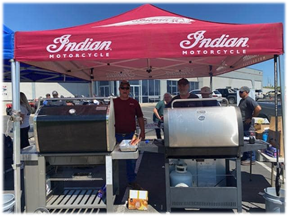
After our July Chapter meeting, we had a cookout at the Dealership. This was in support of the Indian Motorcycle Great Summer Cookout promotion celebrating the brand’s heritage and culture. It was so much fun to see everyone there. The hamburgers and hotdogs were delicious, the company was great, and the weather was perfect. It was good to see folks just relaxing and enjoying each other’s company. Guests coming into the Dealership all stopped to see us and grab lunch. We enjoyed chatting with everyone who stopped by. A special thanks to Jeff and the Indian Motorcycle of Fort Collins for sponsoring the food, and National Indian Motorcycle Riders Group for providing swag to handout to those coming to the event.
WHERE IS THE MOST AWESOME PLACE YOU’VE EVER RIDDEN A MOTORCYCLE?
This question was posted on the Southern IMRG Region Group page on Facebook. Members from the different Chapters responded with the follow locations (Southern Region consists of Chapters in Colorado, Texas, Louisiana, Arkansas, Missouri, Kansas, New Mexico, and Oklahoma).
| Million Dollar Highway* | Spearfish Canyon* |
| Cascade Mountains | Beartooth Pass |
| Canadian Rockies | Northwest Arkansas |
| Black Hills* | Italy |
| Blue Ridge Parkway | Durango* |
| Glacier National Park | Mount Rainier |
| Hwy 299 between Eureka, CA & Weaverville, CA | Oregon Coastline |
| Haleakala National Park, Maui | Tail of the Dragon & Surrounding Area |
| Grand Tetons National Park* | Chief Joseph Highway, Wyoming |
| Smoky Mountains | Montreal, QC |
| Skyline Drive, VA | Trail Ridge Road* |
How many of these have you ridden? The NoCo IMRG Chapter has ridden six of these locations. Almost seven; however, rain prevented us from going over Beartooth Pass.
MOTORCYCLE JARGON
There is a lot of slang terms and jargon used by motorcyclists when communicating with one another. Knowing some of the lingo can come in handy for understanding what your fellow biker is talking about.
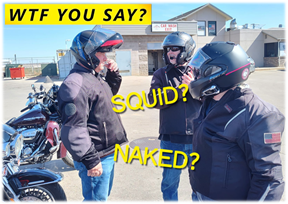
Ape hangers (”Apes”): Very tall handlebars requiring the rider to reach up to them.
ATGATT (“AT-GAT”): Acronym used by the American Motorcycle Safety Foundation to reinforce riders should wear All The Gear, All The Time.
Bagger: A Bagger is a motorcycle fitted with saddlebags allowing the rider to carry items for a trip. Many start riding with no particular way to carry anything of any size. The term may also apply to any touring bike.
Bobber: Bikes that have been customized to have a stripped-down look, and generally feature a short or no front fender, low handlebars, solo seat, and minimal instrumentation. The name comes from the early practice of trimming, or “bobbing,” the fenders and seat on a bike to the bare minimum.
Café racer: Back in the day in England, riders known as rockers modified bikes for speed with lower handlebars, rear-set footpegs, loud pipes, and more, and rode quickly from nightspot to nightspot (café to café). Bet I can beat you there! Thus, the café racer. Today, modifying vintage bikes into “café racers” is a popular trend.
Cage/cager: Motorcycle slang for a car and the driver.
Chopper: So called because they were often “chopped” together out of other bike parts. A heavily modified style of cruiser often featuring elongated front end, tall handlebars, high sissy bar, large rear wheel, custom paint, and other elaborate modifications.
Colors: Many motorcycle clubs and riding groups have distinctive patches to display on jackets and vests. These patches are known as Colors.
Countersteering: The technique of pushing on a handlebar in the direction you want to go. If you try to “turn” the bars in the desired direction, you’ll go the opposite way. That’s just how physics works on a motorcycle.
Crotch Rocket: A term used to describe a high-performance sportbike.
Cruiser: A motorcycle that is meant to enjoy the ride, and not race from point A to point B. It’s more about the vibe and the feeling of the open road. A cruiser generally has a lower seat height and more relaxed riding position with the legs forward.
Dresser: Motorcycle slang for “touring bike.” These bikes are in full dress, or are dressed up for long distance riding comfort. The motorcycle will have saddlebags, trunk, fairing, windscreen, and other comforts such as heated seats and handgrips, stereo, etc.
Enduro: An older term that has largely been replaced by “dual-sport” or “adventure bike.” Refers to street-legal dirt bikes, or bikes that can be used for both on and off-road riding.
Friction zone: If the clutch is squeezed all the way in, all power from the rear wheel is removed. If the clutch is let all the way out, all the power is going to the rear wheel. If the clutch is squeezed a little bit between being fully engaged and fully released, you will be in the friction zone of the motorcycle.
Hairpin: A very tight turn.
Hardtail: An older style of motorcycle that has no rear suspension system.
Lane splitting: This is the practice of riding a motorcycle between lanes of traffic.
Lid: Another name for a helmet.
MSF: Stands for Motorcycle Safety Foundation. The MSF offers basic and advanced riding instruction.
Naked/naked bike: Describes motorcycles that don’t have plastic bodywork covering them up, or fairings. Naked bikes are stripped down to the basics.
Pannier (panny/pannies): Fancy French motorcycle slang for saddlebags or luggage located on either side of a bike’s passenger seat. With the rise of dual-sport riding, panniers now refer more to hard-sided cases, while traditional leather or soft-sided bags are still called saddlebags.
Ride your own ride: A common adage among motorcycle riders meaning you should avoid comparing yourself with other riders and don’t try to keep up with someone who’s going faster than your skill level currently allows. Just enjoy the pleasure and freedom of riding within your own comfort level.
Scoot: Affectionate term for a motorcycle.
Squid: Generally means “idiot rider.” A motorcycle rider who has few if any true riding skills, no training, and no common sense. They often wear little or no protective gear, and ride extremely recklessly. Tries to show-off and be cool.
Stoppie: A motorcycle maneuver performed by a skilled rider to stop a moving motorcycle so the rear wheel is raised in the air while balanced on the front tire.
Tailgunner: The last rider in a motorcycle group formation. Also known as a Sweep.
Tank slapper: An uncontrolled wobble of the motorcycle forks and handlebars from side to side.
Tins: Refers to sheet metal on the motorcycle. Typically in reference to the gas tank and fenders.
Tupperware: Refers to all the outer plastic covering the frame and engine of the motorcycle. The motorcycle is being preserved inside the Tupperware. If you remove the Tupperware, you have a naked bike.
Twisties: Slang for roads with a lot of curves.
Two-up: Two people riding on a motorcycle, a rider and a passenger.
THE VAN BUREN SISTERS: CROSS-COUNTRY MOTORCYCLE PIONEERS
In the early 20th century, when women’s rights were still in their infancy, two courageous sisters embarked on a daring journey that would challenge the social norms and pave the way for female empowerment. The Van Buren sisters, Augusta and Adeline, set out on an unforgettable two month and 5,500 mile cross-country motorcycle ride on July 4, 1916 from Sheepshead Bay, New York. They were riding Indian PowerPlus motorcycles, which were considered to be some of the most advanced motorcycles of their time. Their journey not only challenged gender stereotypes but also showcased the power of determination, resilience, and the spirit of adventure. The sisters became the first women to cross the continental United States on motorcycles.
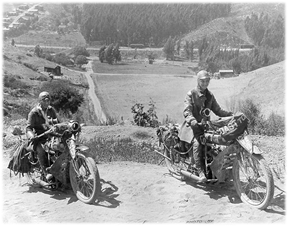
At a time when women were often confined to domestic roles, Augusta and Adeline Van Buren chose to break the mold, and to defy social expectations and follow their passion for motorcycles. With the objective of proving women’s capabilities and advocating for women’s suffrage, the sisters planned a cross-country trip that would challenge their physical endurance and test their mental fortitude. Undertaking such a risky adventure came with its fair share of obstacles, and the need to overcome many challenges. The Van Buren sisters faced inclement weather, rough terrains, mechanical failures, and social disapproval throughout their journey. Despite these challenges, they demonstrated extraordinary resilience and never gave up. In Colorado, the sisters became the first women to reach the summit of Pikes Peak by motorcycle. They also rode through the Rocky Mountains, which were a major test of their endurance.
The sisters’ audacious journey captured national attention, helping to dispel misconceptions about women’s aptitude for physical challenges. The Van Buren sisters shattered stereotypes and showed the world that women could be fearless, self-reliant, and adventurous. Their ride challenged not only gender stereotypes but also inspired other women to step out of their comfort zones and pursue their dreams. The Van Buren sisters’ ride had a significant impact on the Women’s Rights Movement of the time. Their journey drew attention to the suffrage movement and showcased the strength and capabilities of women. By proving women could handle the challenges of long-distance motorcycle travel, the sisters helped foster support for women’s right to vote and paved the way for greater gender equality.
The Van Buren sisters’ cross-country motorcycle ride was a groundbreaking moment in history, challenging gender stereotypes and encouraging women around the world to embrace their strength and independence. Augusta and Adeline’s journey stands as a testament to the power of determination, resilience, and the pursuit of one’s dreams. They kept pushing forward with unwavering determination until eventually arriving at their destination in Los Angeles on September 8, 1916. They had completed their journey in just over two months, and they had made history. Their fearless spirit continues to inspire generations of women to break barriers and fight for equality.
The legacy of the Van Buren sisters’ cross-country ride left an indelible mark on history. Their courageous act inspired countless women to break free from the shackles of social constraints and pursue their dreams fearlessly. Their story serves as a powerful reminder of the importance of resilience, determination, and self-belief in the face of adversity. The Van Buren sisters’ cross-country motorcycle ride was an incredible accomplishment. It showed the world that women were capable of great things, and it helped to pave the way for future generations of female adventurers. Their story is an inspiration to us all.
